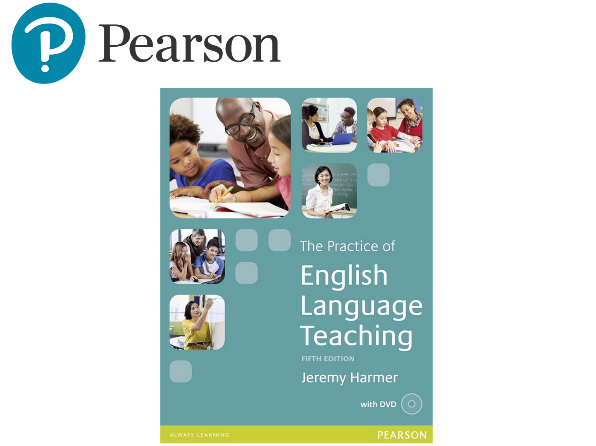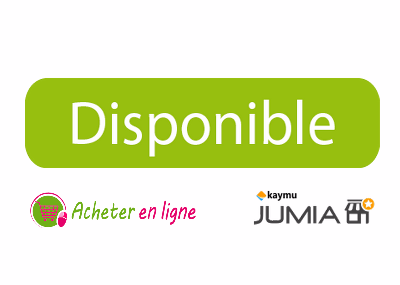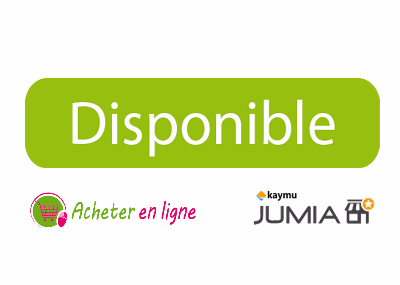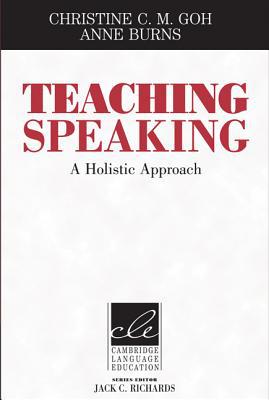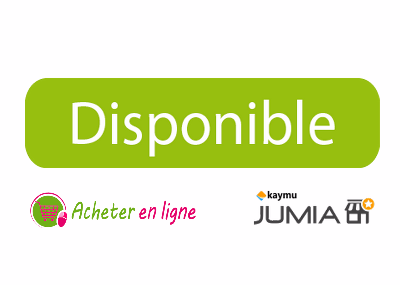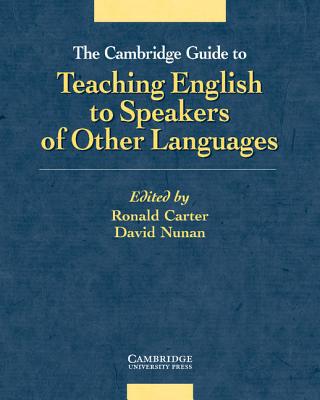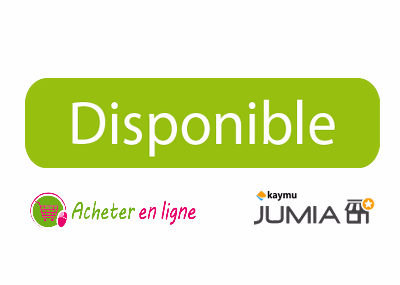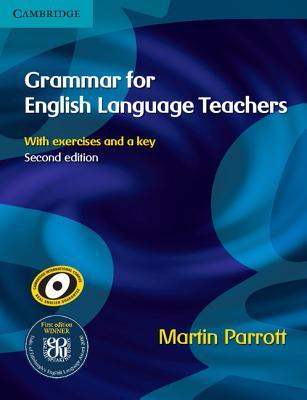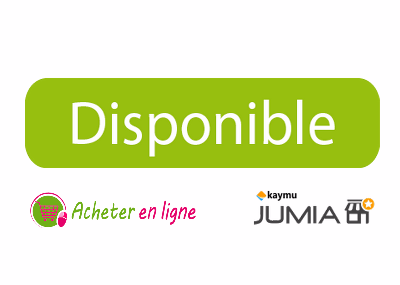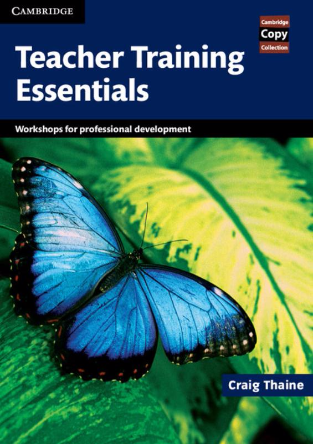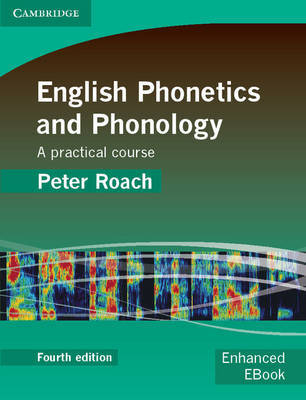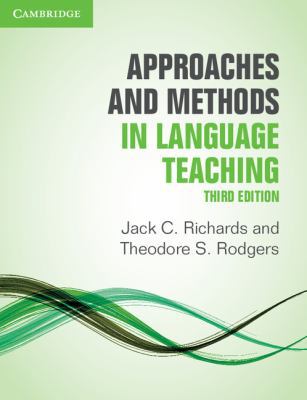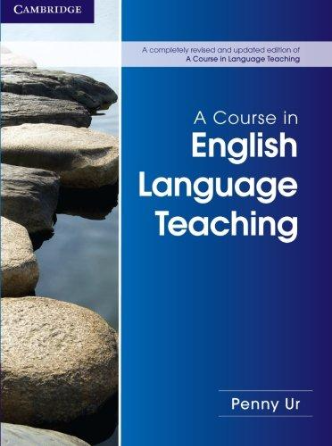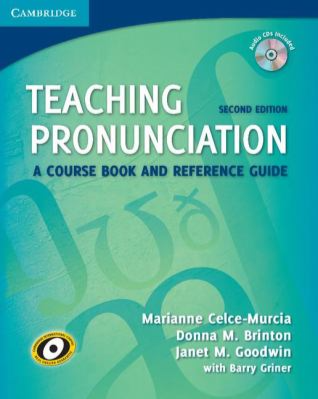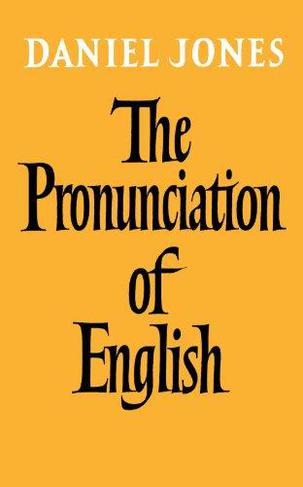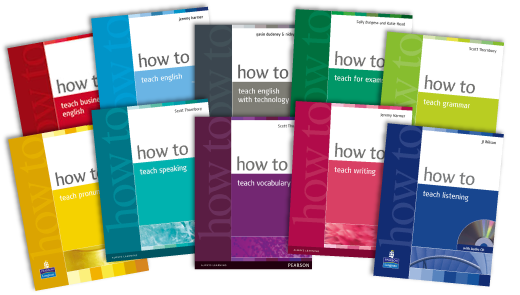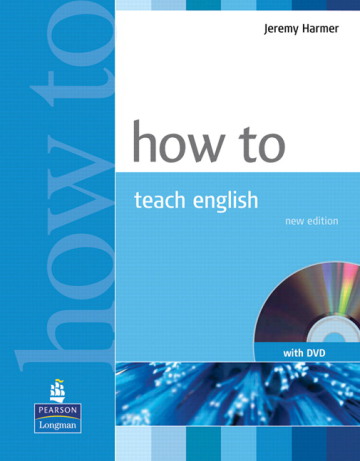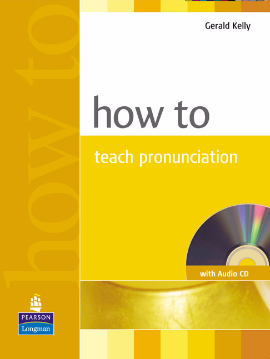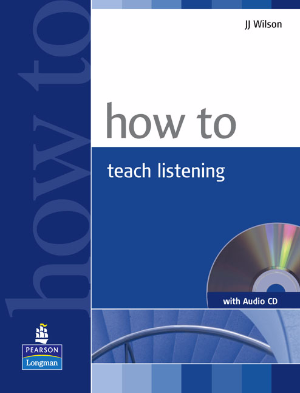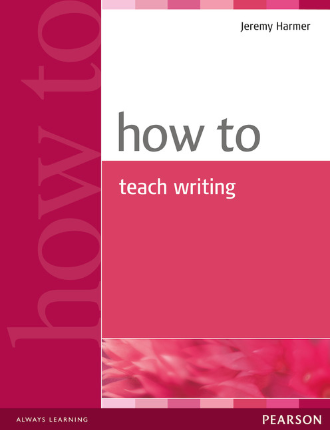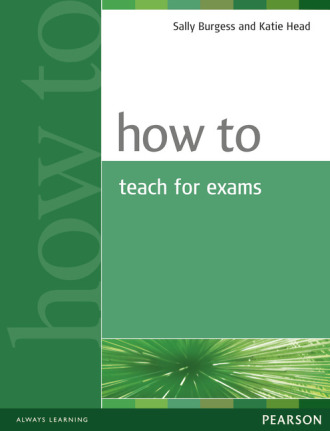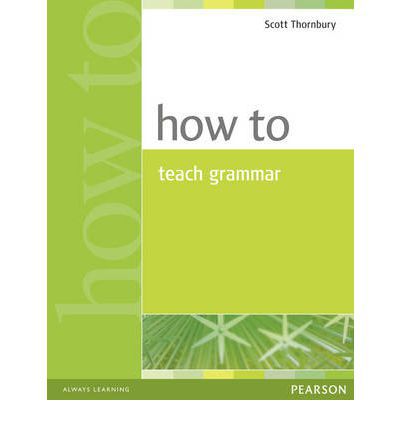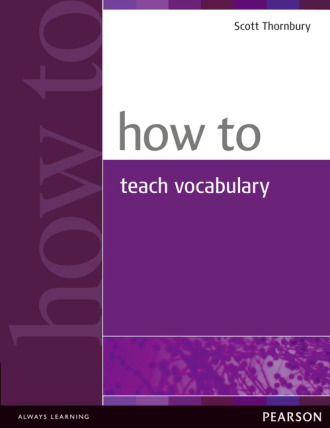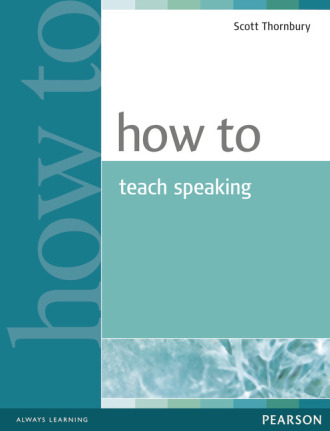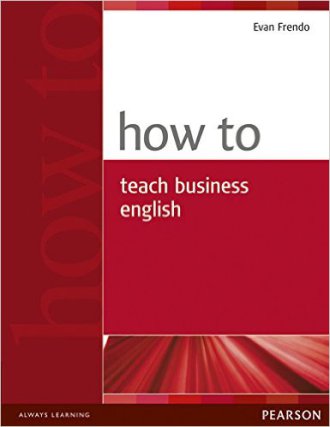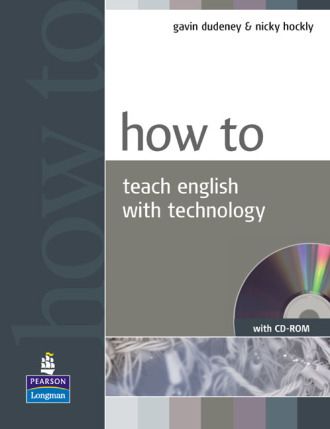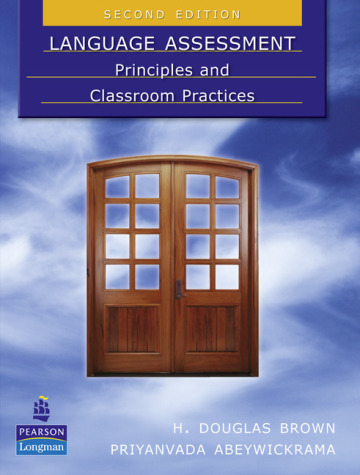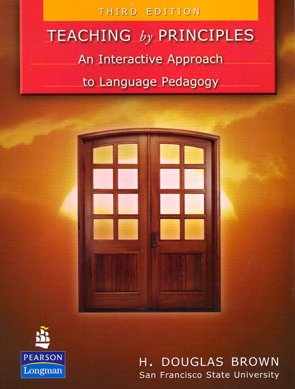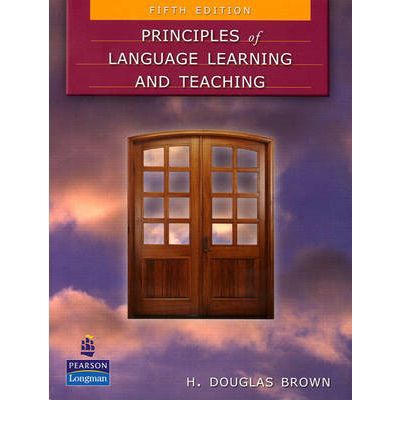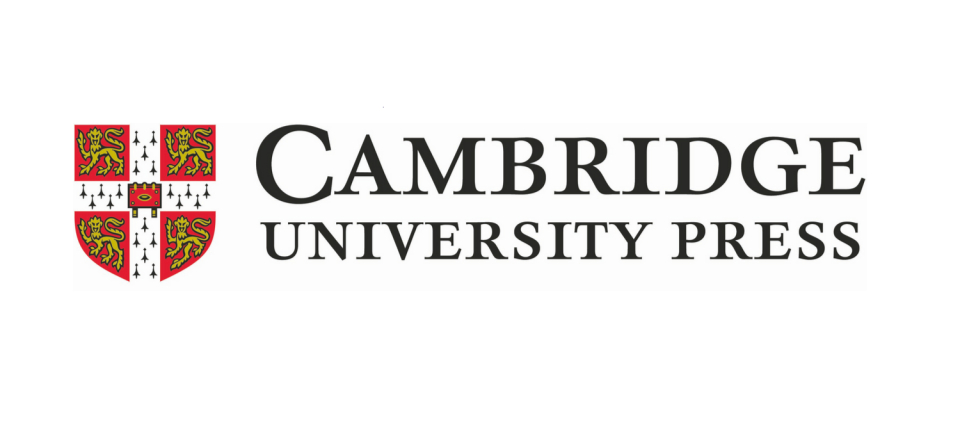
Didactics & Pedagogy
Take a look at this
award-winning book and see why so many courses highly recommend it and so many teachers highly rate this book. 24 chapters provide a store house of information and ideas. The DVD shows whole-lesson
progression and management, including interviews with teachers about how they structured their class and why.
The brand new edition has a
practical new design in full colour which helps you quickly find your way around the material, an updated DVD, plus extras material like lesson plans, printable activities, case studies and more, on
the Teacher Training Professional Development Website.
The material addresses new topics
such as the rise of CLIL, flipped classrooms, learner efficacy, the development of soft skills - critical thinking, intercultural competence, presentation skills, digital literacies and other '21st
century skills'.
A unique methodology book,
Essential Teacher Knowledge is the core foundation-level guide for teachers of general English, young learners and CLIL.
Units on essential theory,
practical teaching advice and classroom ideas are presented across two pages, in full colour. Written in accessible English, Essential Teacher Knowledge is ideal preparation for TKT and other
entry-level teacher qualifications, or as a handbook for any ELT teacher.
The
DVD:
Two hours of video footage
includes:
• Demonstrations of key teaching
techniques, such as giving instructions and correction, so new teachers can see the theory put into practice
• Global "Teachers' Voices" -
teachers from around the world sharing opinions and ideas about key issues for the global English teaching community
On the
Web
PIN-coded access to extra online
material:
• Audio to accompany the
Pronunciation units (23-29)
• Downloadable Activities (Revise,
Research, Reflect) to accompany every Unit
• More Teachers' Voices
videos
• Other resources for teachers,
including an up-to-date bibliography
Teaching Speaking A Holistic Approach brings together theoretical and pedagogical perspectives on teaching speaking within a coherent methodological framework. The framework combines understandings derived from several areas of speaking research and instruction. By explaining, interpreting, evaluating, and synthesizing these diverse perspectives from linguistics and language learning, the text offers a comprehensive and versatile approach for teaching speaking. Different types of learning tasks are explained and illustrated with examples, and each chapter includes short tasks and ends with a number of tasks that enable readers to extend their ideas.
Part I. Speaking Processes and Skills:
2. Cognitive processes in speaking
3. Speaking competence
Part II. Spoken Discourse: 4. Genres of speaking
5. Spoken grammar and discourse intonation
Part III. Designs and Approaches: 6. A methodological framework
7. A model for teaching speaking
8. Developing a speaking programme
Part IV. Classroom Practices and Processes: 9. Developing fluency
10. Developing accuracy and complexity
11. Raising metacognitive awareness about speaking
12. Improving small group discussions
I3. Alternative assessment.
This important book, with 32 chapters by leading figures in the field, is an up-to-date guide to the central areas of applied linguistics and language studies with particular reference to TESOL. It looks at the current state of TESOL as well as at what is likely to happen in the future.
An invaluable resource helping
teachers at all levels of experience to develop their understanding of English grammar.
Grammar for English Language
Teachers is designed to help practising and trainee teachers to develop their knowledge of English grammar systems. It encourages teachers to appreciate factors that affect grammatical choices, and
evaluates the 'rules of thumb' presented to learners in course materials. Consolidation exercises provide an opportunity for teachers to test these rules against real language use and to evaluate
classroom and reference materials.
|
This book of ready-to-use teacher training workshops is designed to provide a bank of perfectly planned and structured sessions with
accompanying photocopiable worksheets. The sessions develop trainees' and teachers' knowledge of three key areas: methodology, language and theory, and encourage them to actively reflect on their own
prior learning and experience. These workshops are ideal for in-house and in-service teacher training as well as preparation for awards such as CELTA, DELTA, Trinity CertTESOL and Trinity LTCL
Diploma TESOL. They are also suitable for those taking B.Ed and PGCE courses.
Each teacher training workshop consists of 2-3 photocopiable worksheets accompanied by comprehensive trainer's notes. Workshops are suitable for a range of teaching experience: pre-service, new in-service or experienced teachers. Trainees will benefit from learning about teaching methodology in training sessions which are models of good teaching practice. |
|
Since the publication of the
first edition in 1983, this course has established itself as the most practical, comprehensive text in the field and become widely used in many parts of the world in universities and other
institutions of higher education. This new edition takes into account recent developments in the teaching of phonology. It includes updated references, fuller coverage of intonation, and a new
chapter on different varieties of English with illustrative recorded material.
At the end of each chapter in the
book there are notes giving information on further reading, discussion of the more challenging issues, written exercises and, where appropriate, suggestions for teachers. In addition the audio CDs
include recorded exercises for every chapter which are particularly helpful for non-native speakers. A full answer key is available at the back of the book. Additional exercises and other supporting
material are available online.
An extensively revised and
updated edition of this popular and accessible text.
Approaches and Methods in Language
Teaching Third edition is an extensive revision of this highly successful book. As in previous editions, both major and alternative approaches and methods are surveyed, with the section on current
communicative approaches updated to include new material on CLIL, text and genre-based teaching. The book seeks not only to clarify the assumptions behind these approaches, and their similarities and
differences, but also to help teachers explore their own beliefs and practices in language teaching. Further new material deals with other directions in language teaching, such as outcomes-based
initiatives, to make this edition fully up-to-date.
A completely revised and
updated edition of A Course in Language Teaching.
This book provides a comprehensive
introduction to English language teaching, and is suitable for teachers in a variety of educational settings, including compulsory education. It has been completely revised and updated to include
essential new topics for the modern English language teacher, including English as an international language, Content and Language Integrated Learning (CLIL) and using digital materials. It is ideal
for initial teacher training and as a reference guide for practising teachers. The book combines theory and practice, with each unit containing tasks that encourage reflection and discussion, plus
action tasks such as classroom observation and practice.
This new edition of Teaching Pronunciation - undoubtedly the gold standard for pronunciation methodology texts - has been revised to reflect recent research into the sound system of North American English, as well as new practices in pronunciation pedagogy. Audio CDs with additional examples are now packaged with the book.
- Chapter 1 The History and Scope of Pronunciation Teaching
- Chapter 2 Research on the Teaching and Acquisition of Pronunciation Skills
- Chapter 3 The Consonant System
- Chapter 5 Connected Speech, Stress, and Rhythm
- Chapter 6 Prominence and Intonation in Discourse
Part III Issues in Implementation
- Chapter 7 Pronunciation in the Language Curriculum
- Chapter 8 Testing and Evaluation
- Chapter 9 Techniques, Tools, and Technology
Part IV Intersections of the Sound System with Other Areas of Language
- Chapter 10 Pronunciation and Listening
- Chapter 11 The Sound System and Morphology
- Chapter 12 The Sound System and Spelling
Bibliography
Answer Key
Author Index
Subject Index
This revised edition incorporates the final results of Daniel Jones' lifelong study of English pronunciation usage. It is the standard work on English phonetics. The Pronunciation of English was written originally as a detailed description of the phonetics of English, presented from the point of view of the native English-speaking student. Since the book provided key information needed by foreign students, it soon established itself as a standard textbook in universities where English was spoken as a foreign language. Most of the book is devoted to a descriptive account of English pronunciation. This is followed by illustrative texts in phonetic transcription of Received Pronunciation and several regional varieties, Scottish and American pronunciation and reconstructions of Shakespearian and Chaucerian speech.
This book provides, in a lucid and authoritative manner, the basic information on pronunciation of English needed by foreign students.

How to Teach Series are practical guides to the theories and classroom implementation of English Language Teaching. All major topics from the ELT classroom are covered including Vocabulary, Technology, Exams and Business English. Task files at the back of each book help teachers understand their subject and put into practice what they have studied.
The How to...series offers practical teaching ideas within a clear, theoretical framework. Each title includes a photocopiable 'Task File' of training and reflection activities to reinforce the theories and practical ideas presented.

• New glossary to explain teaching terms
• DVD with classroom demonstrations of core classroom techniques
• New chapter on testing

How to Teach Pronunciation offers practical teaching ideas within a clear, theoretical framework. Each title includes a photocopiable 'Task File' of training and reflection activities to reinforce the theories and practical ideas presented.
Provides detailed analyses of key topics such as vowels, consonants, stress and intonation, with a variety of sample lessons for each topic.
Includes a photocopiable Learner's Reference Chart of English Sounds, a breakdown of common pronunciation errors, and pronunciation and spelling tables.
An audio CD with spoken examples of sounds, words and phrases from the book puts the theories examined into a clear context.
 How to Teach Listening is edited by Jeremy Harmer. It is written by teachers and teacher
trainers - people who know the reality of the classroom and the support teachers need to get the most out of their students - these practical, easy-to-use handbooks are a must for English teaching
professionals.
How to Teach Listening is edited by Jeremy Harmer. It is written by teachers and teacher
trainers - people who know the reality of the classroom and the support teachers need to get the most out of their students - these practical, easy-to-use handbooks are a must for English teaching
professionals.
They'll help build your confidence and your classroom abilities and, we hope, inspire you to try out new ideas. People remember great teachers. These books help you to be one.

How to Teach Writing is a practical guide to the theory of writing and to a range of approaches in the teaching of writing. It is intended for teachers at the beginning of their careers and for more experienced teachers and offers a description of the processes that people go through when writing, an analysis of different types of text in terms of genre and register, and of quality of writing in terms of cohesion, coherence and appropriacy.

How Teach for Exams offers practical teaching ideas within a clear, theoretical framework. Each title includes a photocopiable Task File of training and reflection activities to reinforce the theories and practical ideas presented.
An analysis of how listening, speaking, reading and writing, as well as grammar and vocabulary, are tested in a range of exams, and a description of appropriate teaching strategies for each.
 A guide for teachers on how to develop or enhance their grammar-teaching skills. The early part of the book considers
such issues as the nature of grammar and the reasons for teaching it. Subsequent chapters explore both inductive and deductive approaches to grammar. A guide for teachers on how to develop or enhance their grammar-teaching skills. The early part of the book considers
such issues as the nature of grammar and the reasons for teaching it. Subsequent chapters explore both inductive and deductive approaches to grammar. |
|
|
|
|



How to Teach Business English covers key areas such as course preparation, materials and creation, and exploiting essential teaching techniques for different business contexts. Moreover, it gives special emphasis to intercultural training and electronic learning. You can find sample lessons and activities throughout the book for teachers to use immediately in their teaching practice

Practical advice on how to use the Internet, email, podcasts, interactive whiteboards etc
Tutorial CD-ROM with guided examples and step-by-step instructions
Advice on how to keep up to date with new technologies

Language Assessment: Principles and Classroom Practices, offers a clear,
comprehensive survey of the essential principles of assessing second language learning, as well as the critical tools teachers need to evaluate performance fairly and effectively. This invaluable
resource joins Brown's classic texts, Principles of Language Learning and Teaching and Teaching by Principles, in providing indispensible guidance for second language instruction.
Language Assessment provides a working knowledge of the principles of assessment and their practical application in the classroom. This concise, comprehensive treatment of all four skills includes classification of assessment techniques ranging from controlled to open-ended item types, while a discussion of standardized tests examines their design, purpose, validity and utility.
Additional key features:
• A focus on classroom-based assessment at all levels of proficiency.
• A thorough examination of standards-based assessment and standardized testing.
• A wealth of practical examples to illustrate principles and guidelines.
• An exploration of the ethics of testing in an educational and commercial world.
• Comprehensive treatment of alternatives in assessment.
• A chapter devoted to guidelines and practical suggestions for assigning grades.
• End-of-chapter exercises and suggested additional readings.

Teaching by Principles: An Interactive Approach to Language Pedagogy, Third
Edition, by H. Douglas Brown, is a widely acclaimed methodology text used in teacher education programs around the world. This user-friendly textbook offers a comprehensive survey of practical
language teaching options, all firmly anchored in accepted principles of language learning and teaching. End-of-chapter exercises give readers opportunities to process material interactively.
Suggested readings direct readers to important books and articles in the field.
This third edition of Teaching by Principles features:
• new chapters on course design, technology and critical pedagogy to reflect current trends and advances in methodology
• prereading organizers at the beginning of each chapter
• updated, expanded references
• treatment of other recent "hot topics" of interest: corpus linguistics,
form-focused instruction, multiple intelligences, nonnative English-speaking teachers, autonomy, willingness to communicate, alternatives in assessment, reflective teaching

Principles of Language Learning and Teaching, Fifth Edition is the classic second language acquisition text used by teacher education programs worldwide.
Principles introduces key concepts through definitions of terms, thought-provoking questions, charts and spiraling. New "Classroom Connections" encourage students to consider the implications of research for classroom pedagogy. An up-to-date bibliography and new glossary provide quick access to important works and key terminology in the field.
